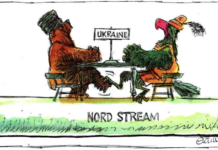
The Government has announced a package of changes to the Emissions Trading Scheme (ETS) following a review of the system.
Agriculture was not included in the scope of the review and while the ETS will be re-opened to international units, with limitations, the timeframe on this has not yet been set.
The SMC asked experts to comment on the review. More information and past comments on the ETS are available here.
________________________________________
Professor Euan Mason, School of Forestry, University of Canterbury, comments:
“‘Thin air’ carbon credits with no environmental credibility will be given to polluters and also auctioned. The carbon price will be suppressed and the notion of ‘greenhouse gas neutrality’ will be undermined. How could you recommend to anyone to participate in New Zealand’s emissions trading scheme when the supply of bogus credits is infinitely variable? This is the nail in the coffin of our ETS.”
________________________________________
Catherine Leining, Policy Fellow, Motu Economic and Public Policy Research, comments:
“Policy uncertainty is a powerful deterrent for efficient low-emission investment. Since late 2012, the NZ ETS market has had no certainty on long-term unit supply and domestic emission prices – or on how quickly New Zealand will head towards net zero domestic emissions.
“The New Zealand government has announced four significant changes to the NZ ETS which will make it a more useful tool for helping to meet New Zealand’s emission reduction targets under the Paris Agreement.
“This package signals the mechanisms that the government will use to manage future supply and prices in the NZ ETS in alignment with New Zealand’s targets. It does not tell us what unit prices will be. The mechanisms have potential to shift New Zealand onto a low-emission pathway, but only if they are implemented well. The current uncertainty for low-emission investors will continue until further decisions are made.
“At this time, the government has chosen not to implement a price floor, which would have offered a minimum return on low-emission investment and served as a price safeguard against interactions between the NZ ETS and other policies. We looked at this in our recent paper and it would be worth reconsidering.
“Over 2021-2030, New Zealand faces a projected target gap of 220 Mt CO2eq. The stated intention is to meet this through domestic emission reductions, forestry and purchase of international emission reductions (which at present can only be done by government and whose availability and cost are uncertain). Furthermore, NZ ETS participants have a sizeable bank of NZUs which will be honoured by the government.
“The government has not signalled how the cost of bridging this target gap will be allocated across ETS sectors, non-ETS sectors and New Zealand taxpayers. The government did affirm that current free allocation to industrial producers will remain unchanged through 2020 and biological emissions from agriculture will remain outside the NZ ETS for the foreseeable future.
“In an ETS, prices are set by long-term expectations of supply. If the market expects future prices to rise significantly in line with New Zealand’s target, then there is a possibility participants will choose to bank NZUs for a future where they will have more value, and meet their obligations using the $25 fixed-price option instead. This poses a fiscal risk to government.
“The government’s decisions represent a crucial signalling of the direction of travel for the NZ ETS, but the ultimate effectiveness will depend on the details of implementation.”
________________________________________
Dr Ivan Diaz-Rainey, Associate Professor of Finance, University of Otago, comments:
“The announced package provides broad brush direction of travel for changes to strengthen NZ ETS post-2020. The detail will come later following further work in 2018, thereby pushing much of the critical detail beyond the upcoming election.
“As we all know, the devil can be in the detail but it has to be said that that the in-principle decisions announced are to be welcomed. They address many of the concerns about the scheme [See my prior comments on this]. These include the need for auctioning to provide a stronger signal and to help manage the potential financial risks to the government that arise from the fact that we have hard target from the Paris agreement and an NZ ETS that is an intensity system (i.e. no hard cap).
“There is going to be a limit on importation post 2020, which is also welcome but the detail and level still need to be worked out. The government is also signalling that the $25 ceiling may need to be raised and managed over time.
“All the detail for the prior points are to be made joined up, managed and delivered in a manner that do not provide surprises to the market through a five-year rolling planning cycle. The planning cycle will formalise the ability to make changes as circumstances change and is designed to provide more certainty on unit supply. This builds in market design flexibility in a relatively predictable way. Again, this is welcome in principle – it will be interesting to see more detail of how this will all work.
On the less positive side I would make two points: (1) agriculture was not part of the review, but it remains the elephant in the room, (2) it is completely understandable that further work is needed on the detail of the proposals announced and if this is all pretty much wrapped up in 2018 then this will give business enough time to plan for the post 2020 arrangements.
“But if it is not wrapped up by 2018 and it drags on well beyond then we are in danger of making changes that do not allow for enough planning as we approach 2021. It should be doable to work out the core of the detail in 2018 if there is no major political change in the Beehive after the election. Whether political realities allow for it is another matter.”
________________________________________
Dr Adrian Macey, senior associate, Institute for Governance and Policy Studies, Victoria University of Wellington, comments:
“There is one major change signalled – a future limitation on use of international markets. Something that has run counter to the doctrine that has prevailed so far that it does not matter where emissions reductions are made. But this was leading to potentially unsustainable consequences – notably the prospect of spending billions of dollars offshore with no benefit to the NZ economy or its own transition to low carbon.
“And it had already led to the introduction of a huge amount of ‘hot air’ into the NZ ETS through purchasing of dubious credits from Ukraine and elsewhere.
“Linked to that is the signal that government envisages intervening to ensure the NZ carbon price is aligned with our climate change targets. Previously the doctrine was that the ‘international price of carbon’ would be appropriate in NZ.
“So the potential is there for major change in design.
“These longer term implications are accompanied by a reassurance that until around 2020 it’s business as usual and no ETS participants should expect major change.
“The Cabinet paper is unnecessarily redacted to suppress the reasons why it’s hard to link the NZ ETS with others under its present rules [our inclusion of forestry is a major one; the lack of a domestic target with the resulting complete openness to international markets is another] and also which countries NZ is engaging with over possible linking (this can be via ETS schemes or through an offset mechanism).
“Absent is an emphasis on the NZ long-term transition – it’s still on ‘targets’. That’s the focus of the Productivity Commission’s work but it would have been useful to state in this context. There’s a commitment to consult widely with stakeholders over future changes.”





All this hot air amounts to window dressing to avoid looking at known realities. Fiddling with minor details is all they can do to confuse and avoid facing the fundamental changes that are well overdue. We have left this for nearly 40 years and now a crash is unavoidable. Our hope to soften the crash is being corrupted by the growth myth being chased still.
Real public education has been suppressed by Business NZ lies and worthless politicians Bullshit.
A simple read reviewing solid basic research and up to date appraisal of the future ahead and how the politics have been captured by bankers and financial speculators and investors running of Business NZ.
Growth is toxic and terminal. Nothing to do with community good or human survival in fact growth is killing our communities and creating wide spread poverty which will get worse very dramatically.
https://www.thesolutionsjournal.com/article/the-history-of-the-limits-to-growth/
What’s called The Scientific Method, for instance when you study a course in economics you do take a course in methodology. But when you study Physics you don’t take a course in methodology. In physics there are no methods other than being reasonable, and learning from what has been done then seeing if you can carry that forward and so on. In fact the courses one takes in economics and the psychology surrounding current economic consensus are mostly course in statistics and techniques used.
The scientific methods are away of dealing with the world rationally and reasonably.
Can we have confidence in scientific methods?
My answer is no. Scientific methods may mislead in the same way rats are consistently mislead about mazes. We can certainly understand how a rat may feel about being mislead, if that’s true then all we can do is use the same rational approaches to see where the limits to growth (LtG) is. And we have some examples around successive iterations of government. I think we can have confidence each iteration of government will collapse with out content.
Well Sam the Scientific Method is an attempted description of a process used to identify errors in conclusions drawn about any set of observations.
The process can and generally is applied across all the sciences but not always consistently by all scientist or commenters on scientific matters.
Much science is inaccurately reported by media who are hardly qualified to generalise within the subject area.
False arguments and reductionism is found amid discussion of serious works in the public arena but seldom at the cutting edge of scientific discovery..
The ability to differentiate between serious conclusions or findings well tested with peer review, and popular but erroneous beliefs; may take some in-depth knowledge of the subject area and familiarity with past stepping stones which give foundation to new findings.
Without The Scientific Method, what would you use to examine information and find a consistent outcome that describes observations accurately within a context of an overriding and encompassing principle.
It is often easy to identify unqualified “scientific” opinion when there is talk of proving something.
Scientific methods are not a way of proving anything but a way of attempting to test or disprove. if testing does not disprove a theory then the theory is said to hold. That is until further such testing changes that.
You have mentioned LTG which has been not only peer reviewed but examined and tested for over 40 years by many teams within scientific institutions, many times. The accuracy of the data mapped forward has been found to be extremely consistent with what has taken place between 1972 and today. Projections beyond today are held as being highly significant.
But read the report and not the unqualified comments and lies often attributed to that LTG presentation.
Taking any one part of such a report and extrapolating conclusions can be fraught with errors as the whole work is founded on the interactional and interdependent effects of all the major areas identified and considered. The approach is inter disciplinary and now broadly described as Futures.
Comments are closed.